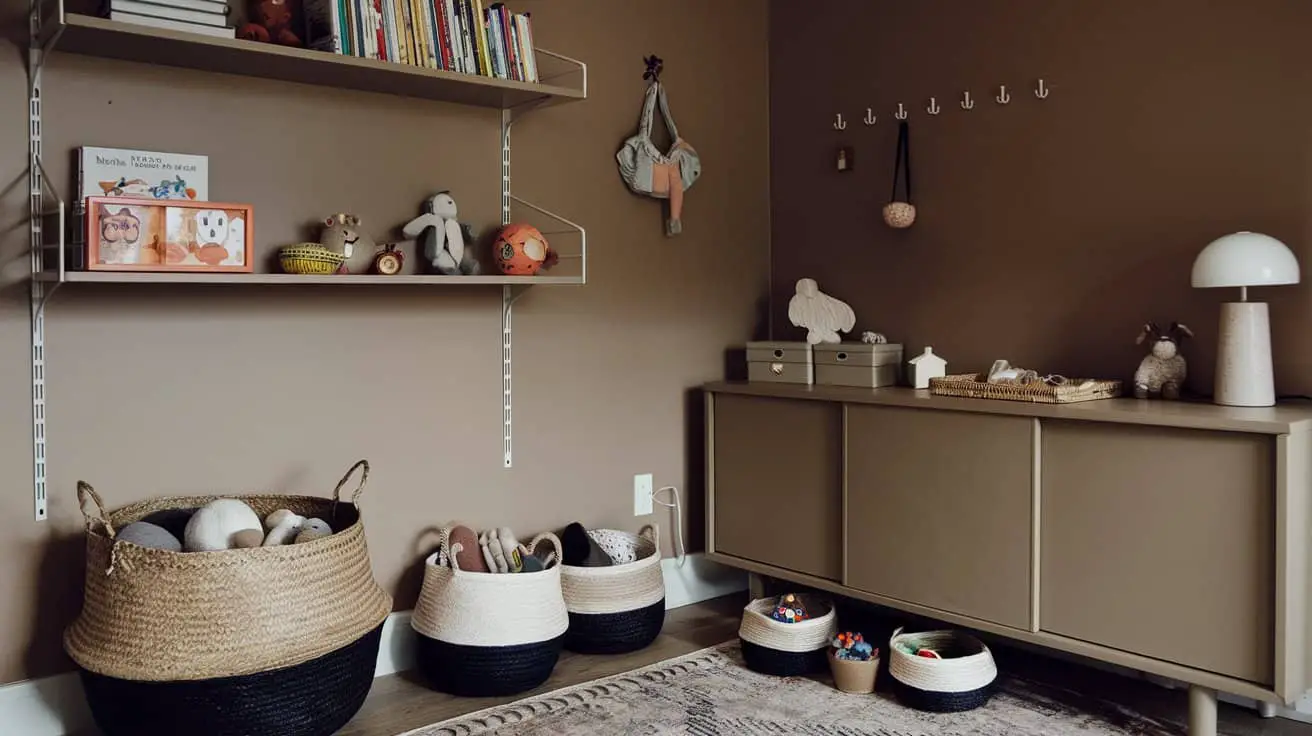
Alright, hear me out—what if your playroom didn’t have to be all rainbow foam tiles and blinding primary colours? What if, instead, it felt a bit like a cozy library, a tiny art studio, and just cool enough to make you want to sit down and stay a while?
That’s what we were aiming for when we decided to turn our chaotic toddler playroom into something a little more… moody. And not moody like grumpy-toddler-on-no-nap, but moody like soft shadows, vintage touches, deep greens, and corners made for curling up with a picture book.
Whether you’ve got a blank slate or you’re trying to refresh your current space without tossing all the toys, here’s how to pull off a moody kids room that still works for real-life messes, imaginary tea parties, and the occasional crayon mural (it happens). These steps are simple, affordable, and full of kids playroom ideas that feel both whimsical and sophisticated—because yes, you can have both.
1. Start With the Color: Go Deep, Not Dark
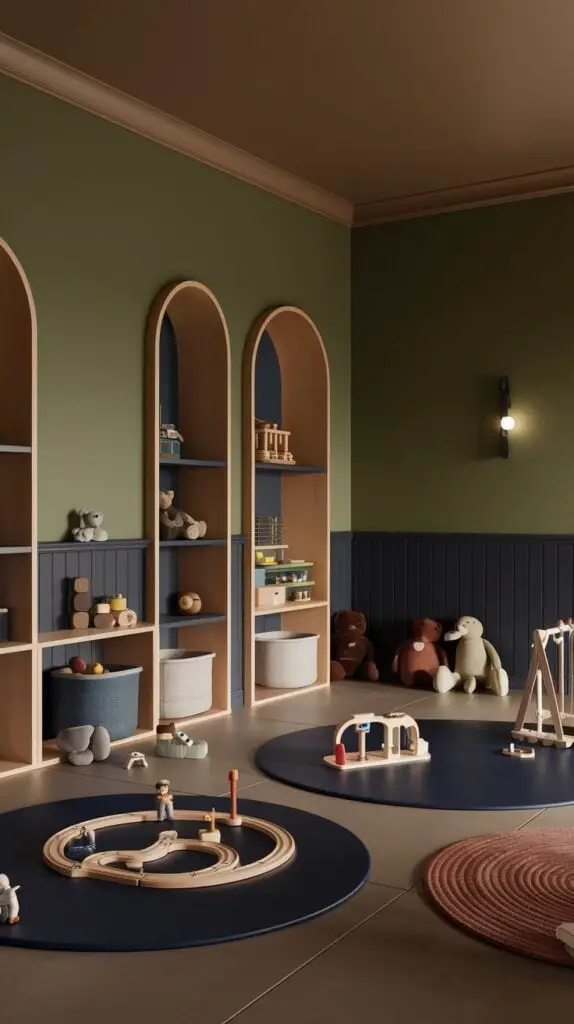
Moody doesn’t have to mean gloomy. Think forest green, warm navy, earthy taupe, or even charcoal with a hint of warmth. If you’re creating a green playroom, olive or sage walls paired with cream or wood accents can instantly bring calm.
Try painting just one wall if you’re nervous—or go all in for full cozy cave vibes. For a moody nursery or toddler playroom, balance out bold walls with soft textures (like a cream play mat or warm oak furniture). And don’t forget the ceiling—it’s an underrated surface that can totally shift the feel of the room.
2. Layer in Cozy Lighting (No Ceiling Lights, Please)

Overhead lights = dentist’s office. For a cozy playroom with moody charm, skip the bright ceiling spots and go for lamps, fairy lights, or even a salt lamp for soft glow.
Wall sconces or a vintage floor lamp bring in the “grown-up” feel, while a toddler-safe nightlight adds that whimsical sparkle. The idea is to create little glow zones around reading corners, art tables, and soft nooks. Look for warm bulbs (2700K or less) to avoid that cold hospital vibe.
3. Add Texture to the Walls and Floor
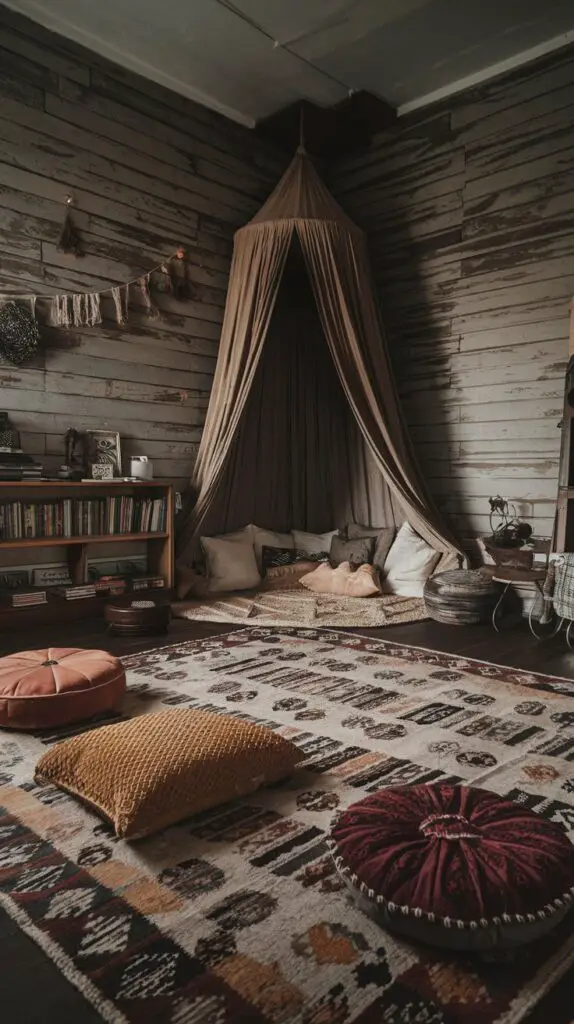
A moody kids room feels grounded, and that’s all about texture. Use a patterned rug (nothing too busy), shiplap walls, or even fabric wallpaper to bring in layers without cluttering the space.
For a vintage playroom feel, lean into materials like cane, linen, wool, or weathered wood. You can also hang a fabric canopy or tapestry to soften corners or create a reading den. Floor cushions, woven baskets, and a low bookshelf add cozy structure without going full toy-store overload.
4. Pick Play Furniture That Feels Grown-Up (But Still Fun)

Avoid bright plastic and instead look for play tables, chairs, and storage in wood, rattan, or soft metal. This is where the room starts feeling more like a sophisticated playroom than a preschool.
I found a mini table with cane-backed chairs that matched our dining room and suddenly the space just clicked. Think mini-meets-minimalist. You still want it to be kid-height and safe, but you don’t need to sacrifice the playroom aestheticjust to make it “fun.” The toys will bring the fun—you just give them a lovely stage.
5. Curate the Toys (Less Is Definitely More)
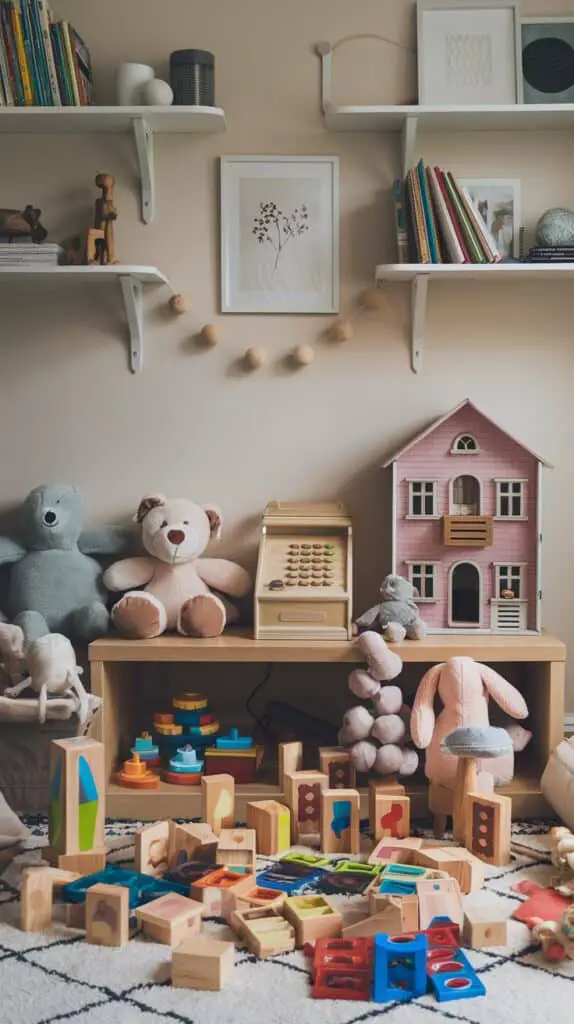
You don’t need to KonMari the whole collection, but a curated mix of beautiful, open-ended toys makes a big difference. Think wood blocks, plush animals, magnetic tiles, and a few vintage finds like a wooden cash register or dollhouse.
Rotate toys seasonally to keep things fresh without overcrowding. A moody playroom looks best when not every surface is screaming “LOOK AT ME.” Closed storage like fabric bins or an antique chest helps tuck away the noisy stuff while keeping the vibe calm.
6. Create a Whimsical Corner Just for Them
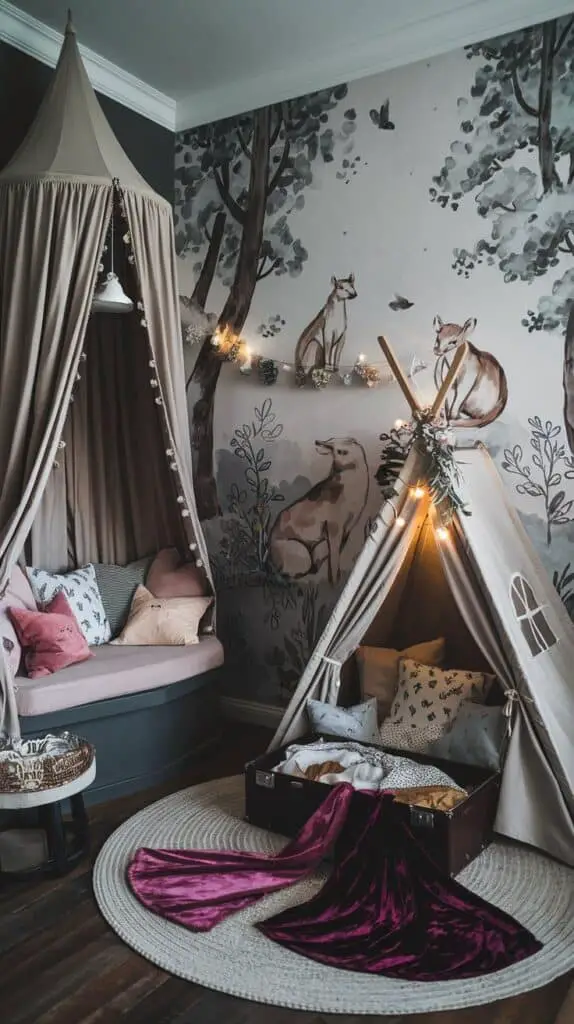
Even in a moodier setting, kids still need their bit of magic. Choose one part of the room to go full whimsical playroom—maybe a reading nook with a canopy, a wall mural with woodland animals, or a tent filled with pillows and fairy lights. You don’t need to spend a fortune or bring in neon colours.
Moody and whimsical actually pair beautifully—especially with soft florals, hand-drawn prints, or a bit of vintage flair. One idea we love? An old suitcase filled with dress-up clothes and velvet capes. It’s imaginative, but it doesn’t break the vibe.
7. Use Vintage Finds to Add Personality
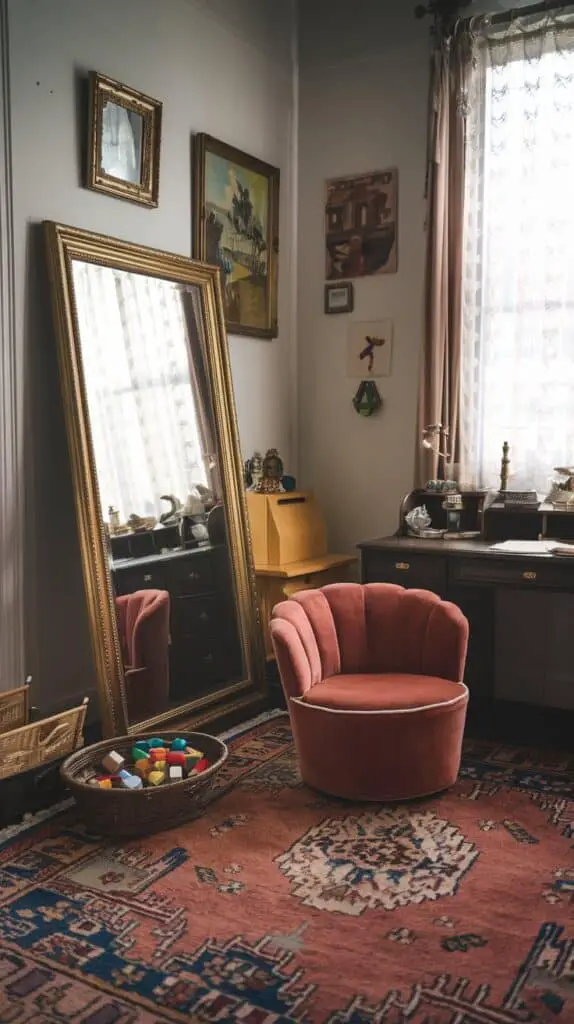
A key to nailing the moody playroom aesthetic is making it feel like a little world of its own—and nothing does that better than a few vintage touches. Scour your local thrift shop or Facebook Marketplace for a small writing desk, a mirror with patina, or a worn-in rug with character.
These pieces add warmth, charm, and a lived-in feel that plastic shelves just can’t match. In one of our favourite setups, we saw a vintage playroom with a low brass-framed mirror, a tiny velvet chair, and a basket of blocks. It looked like something out of a storybook. Just make sure everything’s safe and well-sanded—style shouldn’t come at the cost of splinters.
8. Add Moody Artwork or a Statement Wall
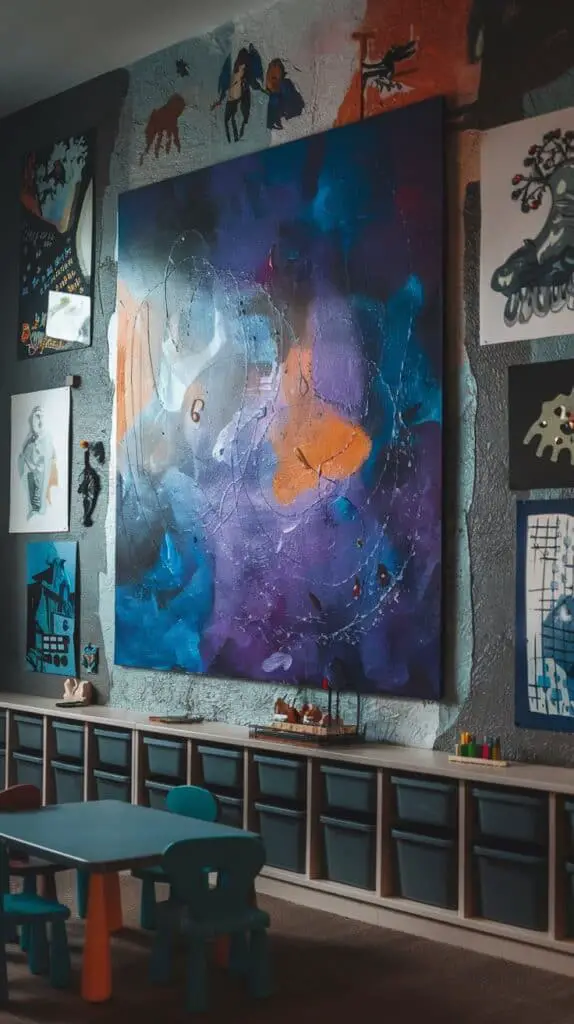
Walls in a playroom don’t have to be all alphabet charts and neon posters. Instead, go for framed prints with storybook themes, botanical drawings, or moody animal portraits. Black frames or dark wood instantly elevate the look without making it feel too adult.
You can even do a gallery wall with soft colours and soft lighting beneath it to create that thoughtful, sophisticated playroom effect. Chalkboard walls also work if you want something interactive that still fits the tone. Bonus: the dark background hides fingerprints like a dream.
9. Make Storage Part of the Design

In a moody space, you don’t want big primary-colour storage bins throwing off the whole feel. Look for lidded baskets in natural tones, old-school lockers, or painted built-ins in the same colour as the walls. This keeps everything flowing without losing function.
Low drawers or a painted credenza can hold toys, books, even art supplies. If you’re working with a small toddler playroom, think vertically—use wall shelves, stackable bins, or even a peg rail with hanging storage bags. The key is to make the storage look intentional, not like an afterthought.
10. Keep It Soft, Safe, and Still Playful
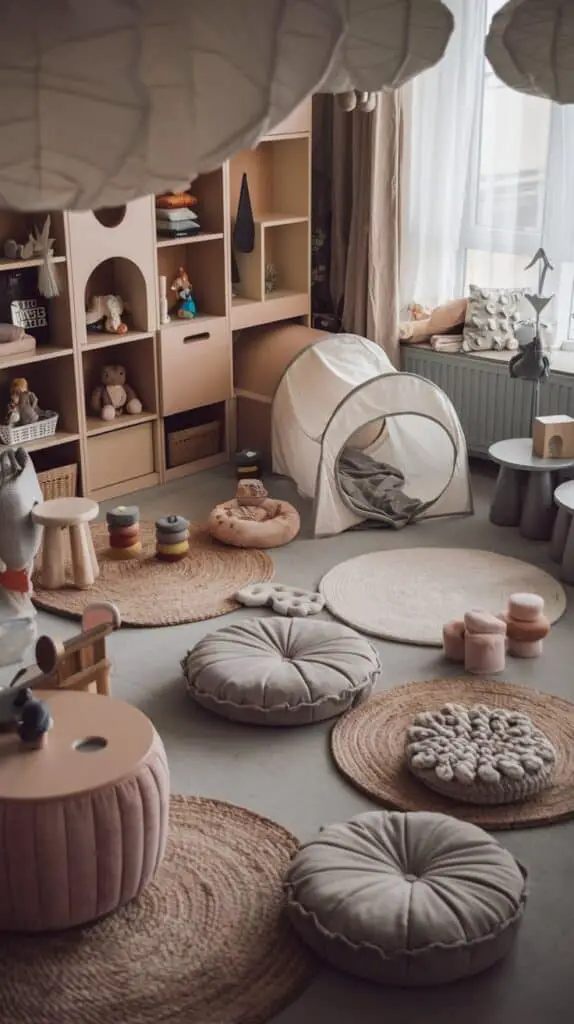
At the end of the day, a playroom still needs to be kid-first. So even if you’re going for a dreamy moody kids room, don’t lose sight of what it’s really for. Add plenty of soft things—cushions, rugs, fabric play tunnels. Pick furniture with rounded edges and washable finishes.
Create zones: a spot to play, a spot to rest, a spot to imagine. If it feels inviting to sit on the floor and just be, then you’ve nailed it. Whether you’re designing a calm moody nursery or a dramatic older kids’ corner, it should still say “come play,” not “don’t touch.” Balance is everything.
Final Thoughts
So there you have it—a full guide to creating a moody playroom that’s as practical as it is pretty. Whether you’re working with a corner of the living room, a full spare room, or a tiny toddler nook, you can bring in that soft, cozy, slightly dramatic vibe without giving up what kids really need—freedom to play, imagine, and occasionally make a massive mess.
The trick is finding that sweet spot between style and comfort. Choose rich colours, layer textures, and don’t be afraid to add personality through vintage finds or quirky corners. Keep it whimsical, keep it cozy, and most of all, keep it yours.
Honestly, I wish I’d made the switch sooner. Our old playroom felt loud the moment you walked in. Now? It’s a space where my little one can build fairy homes in the dark (moody!) and I can sit with a tea and breathe for five seconds. That’s the dream, isn’t it?
And if a basket of blocks ends up under the velvet reading chair again… well, that’s what moody lighting is for.
